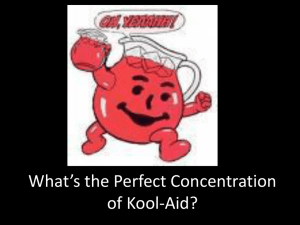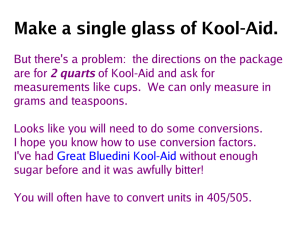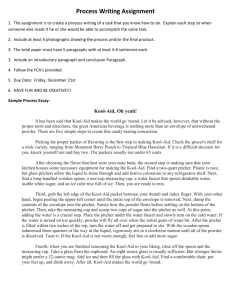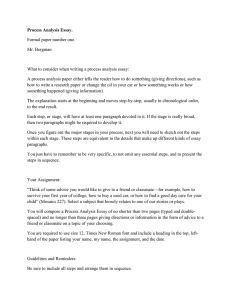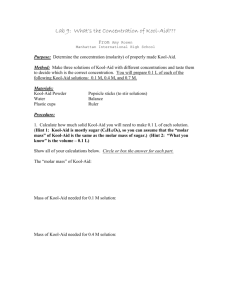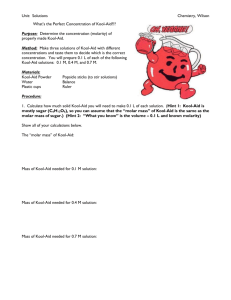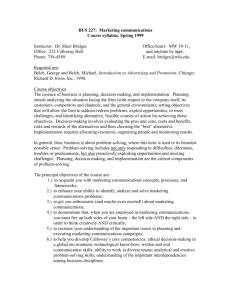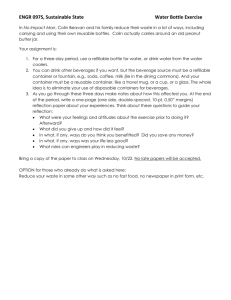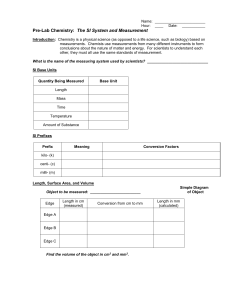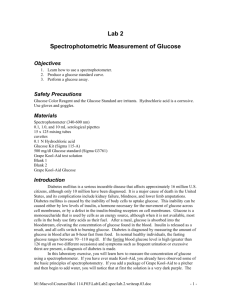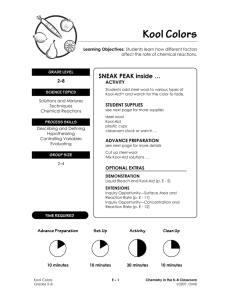Pollution-Groundwater Lab
advertisement
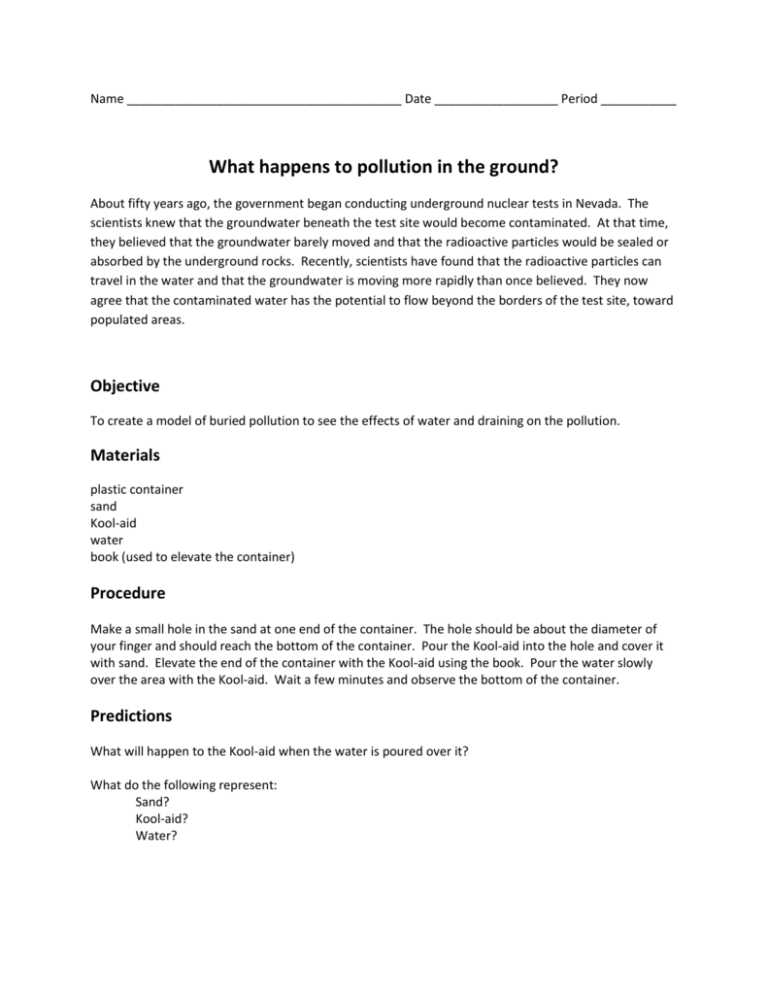
Name ________________________________________ Date __________________ Period ___________ What happens to pollution in the ground? About fifty years ago, the government began conducting underground nuclear tests in Nevada. The scientists knew that the groundwater beneath the test site would become contaminated. At that time, they believed that the groundwater barely moved and that the radioactive particles would be sealed or absorbed by the underground rocks. Recently, scientists have found that the radioactive particles can travel in the water and that the groundwater is moving more rapidly than once believed. They now agree that the contaminated water has the potential to flow beyond the borders of the test site, toward populated areas. Objective To create a model of buried pollution to see the effects of water and draining on the pollution. Materials plastic container sand Kool-aid water book (used to elevate the container) Procedure Make a small hole in the sand at one end of the container. The hole should be about the diameter of your finger and should reach the bottom of the container. Pour the Kool-aid into the hole and cover it with sand. Elevate the end of the container with the Kool-aid using the book. Pour the water slowly over the area with the Kool-aid. Wait a few minutes and observe the bottom of the container. Predictions What will happen to the Kool-aid when the water is poured over it? What do the following represent: Sand? Kool-aid? Water? Observations Draw a picture of the bottom of the container before and after the water was poured. Before After Conclusions What happened to the Kool-aid after the water was poured? What conclusion can you draw about the radioactive waste in Nevada based on this experiment? How could this pollution enter the water cycle? Would the type of rock surrounding the pollution have an effect on its movement? Why or why not?
